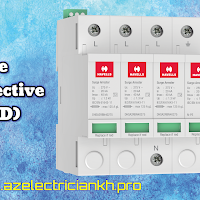
|
| Advantage Of Surge Protective Device (SPD) |
Related Posts
A Surge Protective Device (SPD) is a device designed to protect electrical systems from voltage surges or transients. These surges can occur due to various reasons such as lightning strikes, power grid switching operations, or equipment malfunctions.
The main purpose of an SPD is to divert the excessive surge current to the ground and provide protection to the connected electrical equipment. It acts as a barrier between the external surge and the sensitive electronic devices, ensuring their safe operation.
Here are a few key points to understand about Surge Protective Devices:
1. Surge Protection: SPDs are primarily installed to protect sensitive equipment and systems from voltage surges. Voltage surges can cause significant damage to electronic devices, such as computers, televisions, network equipment, and other appliances. SPDs help to absorb or divert excess surge energy to protect these devices.
2. Types of SPDs: There are different types of SPDs available for various applications. Common types include plug-in surge protectors, whole-house surge protectors, and surge protection strips. Each type has its own installation requirements and capacity for handling surge currents.
3. Voltage Rating: SPDs have a maximum voltage rating that indicates the level of surge they can handle. This rating should match or exceed the expected surge voltage levels in a particular electrical system. Generally, SPDs are designed for specific voltage levels, such as 120V, 240V, or higher.
4. Location of Installation: Surge Protective Devices can be installed at various points in an electrical system depending on the level of protection needed. They are commonly installed at the service entrance to protect the entire electrical system, or at specific equipment or devices to offer localized protection.
5. Standards and Certifications: It is important to choose SPDs that meet recognized standards and have certification from regulatory bodies. Standards such as UL (Underwriters Laboratories), IEEE (Institute of Electrical and Electronics Engineers), and IEC (International Electrotechnical Commission) provide guidelines for the performance and safety of SPDs.
6. Maintenance and Replacement: SPDs have a limited lifespan and can degrade over time due to repeated surge events or normal wear and tear. It is necessary to periodically inspect and test the SPDs to ensure they are functioning properly. In case of failure or expired lifespan, the SPDs should be replaced promptly to maintain the protection.
Overall, Surge Protective Devices play a crucial role in safeguarding electrical systems and equipment from surges. They help to prevent costly damage, downtime, and potential safety hazards caused by voltage transients.
